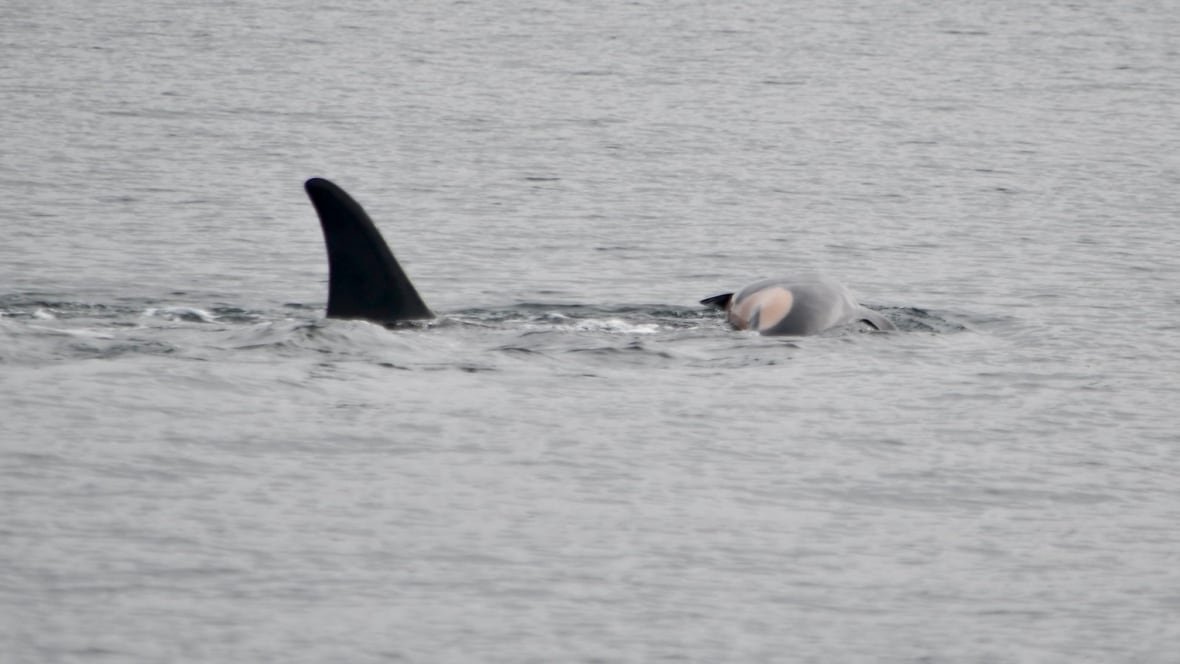A mother killer whale whose calf died more than two weeks ago was spotted recently in waters off Victoria, B.C., still carrying the carcass of her newborn.
The Center for Whale Research spotted the southern resident killer whale, named Tahlequah, or J35, on Jan. 10, nine days after she was first seen pushing her dead calf while she swam.
She’s the same whale that made world headlines in 2018 when she spent 17 days carrying her first dead newborn calf around in a similar manner.
In a Facebook post on Thursday, the centre said J35 was most recently seen swimming next to another whale in her pod, and that the pair were not far off from several other J pod members. They were located between Vancouver Island and San Juan Island in Washington state.
The post detailing the sighting says observers “were not seeing much of the carcass … but J35 appeared to be trying to keep it from sinking.”
Concern for mom’s health
Researchers have said the behaviour is an apparent act of grief, and that J35 has now lost two of her four documented calves.
The new female calf had been spotted on Dec. 21, but was reported to have died around New Year’s Eve.
J35 was then seen on Jan. 1, pushing her calf’s carcass around, draped over the top of her head as she swam.

Researchers expressed concern for J35’s health in a news conference after the Jan. 1 sighting, noting how much effort it would take for J35 to carry her calf in such a manner.
“That essentially results in a lot more drag [as she swims], and so her energy expenditure is going to be fairly significant,” said Brad Hanson, a research scientist with the National Oceanic and Atmospheric Administration’s Northwest Fisheries Science Center.
He added that it may also make foraging difficult during a time of year when fish availability is more limited.
The centre based in Washington state says another newborn that was first observed on Dec. 30, and believed to be the baby of J41, was spotted again on Jan. 10 and “appeared healthy.”

